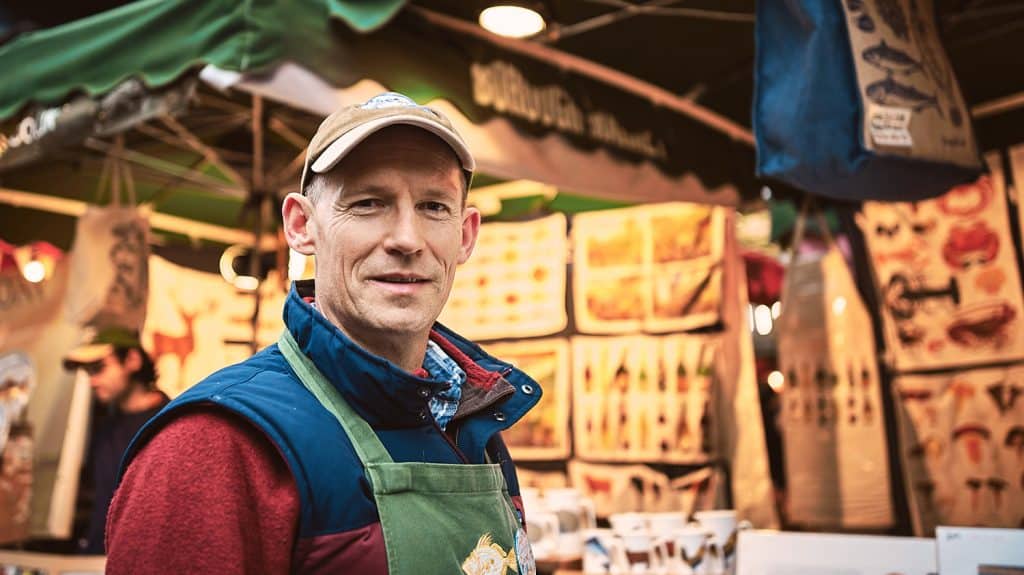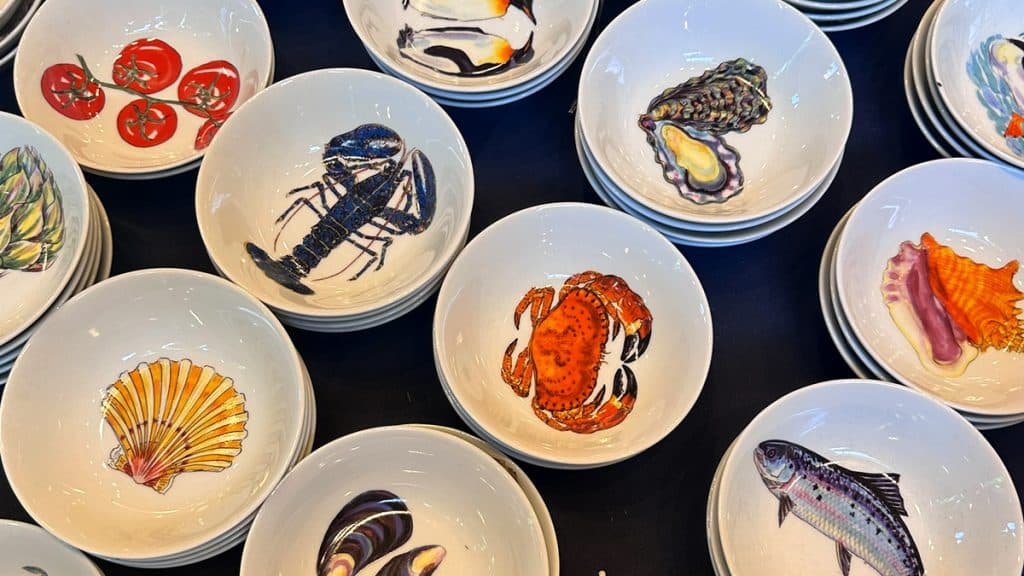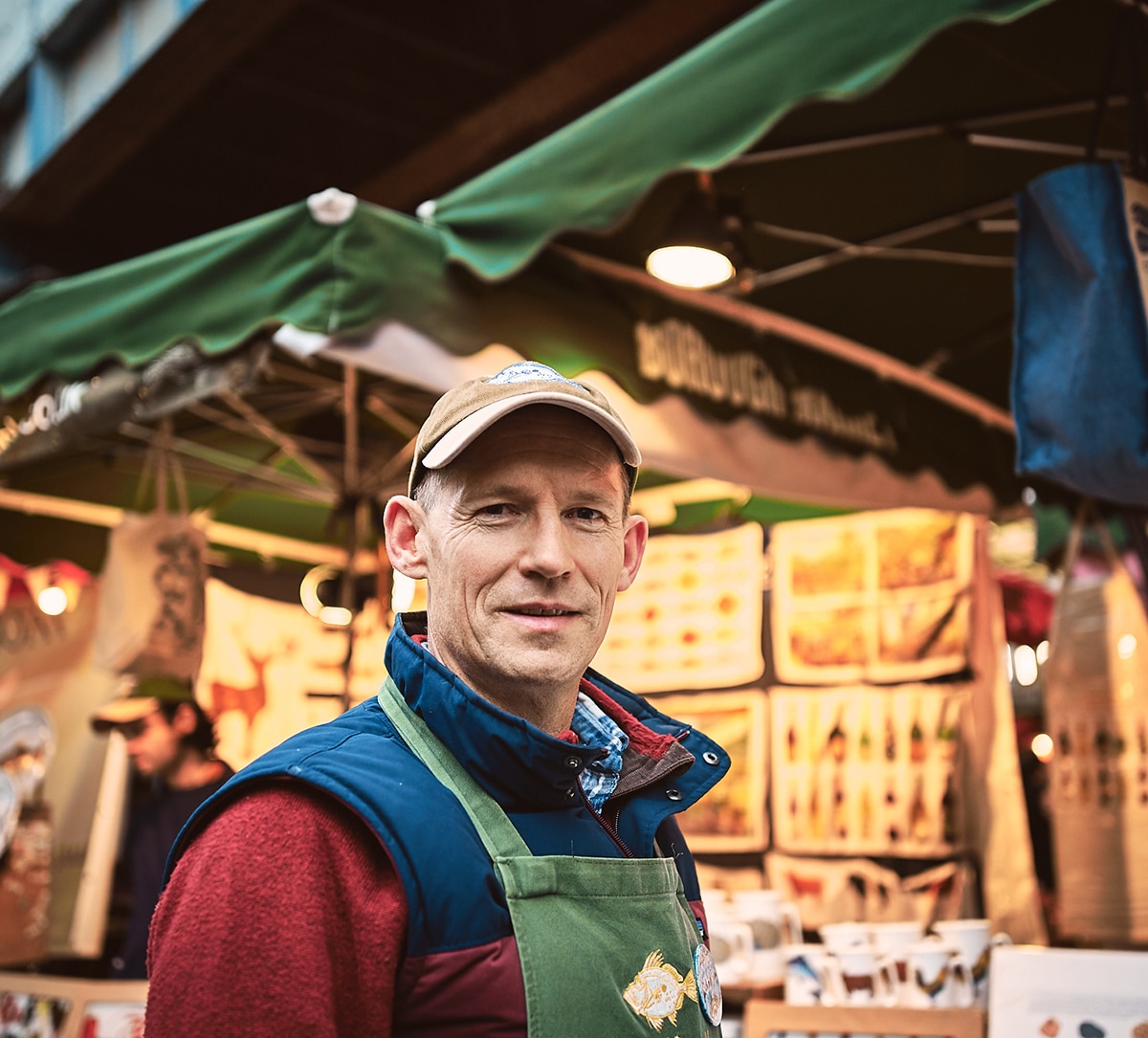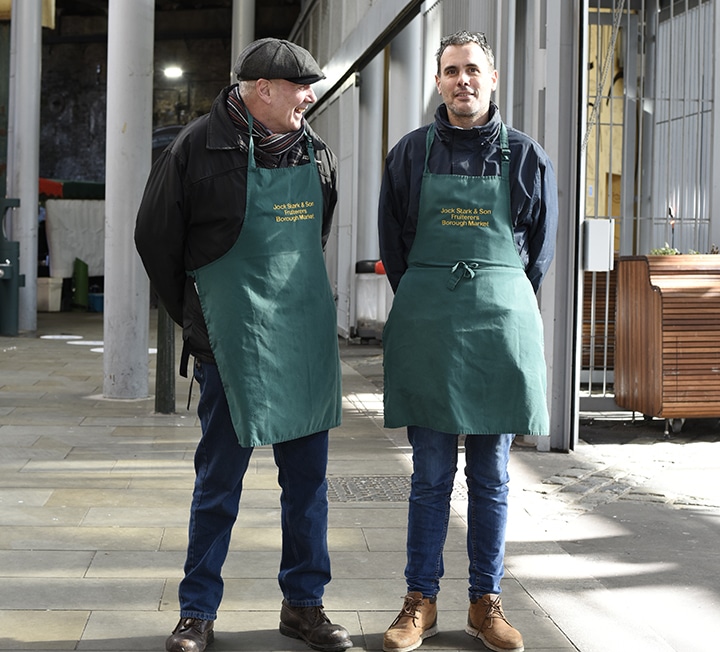Q&A: Richard Bramble
Artist and homewares designer Richard Bramble on his love of nature, the pleasure of blending functionality with artistry, and the potential offered by his move to an indoor stand


“AS AN ARTIST, WHATEVER YOU’RE PAINTING, BE IT ALIVE OR INANIMATE, YOU’RE TRYING TO CAPTURE ITS ESSENCE, ITS SPIRIT”
Interview: Mark Riddaway / Images: Christopher R Proctor, Caranina Rose
“For me, food, nature and art have always been the common threads,” says Richard Bramble, an artist whose stunning paintings of food adorn the ceramics, textiles and homewares sold at his Borough Market stand. “When I was young, our family holidays were spent in Poole Harbour fishing on a boat, or up in Scotland catching plaice or trout. We did the foraging thing. We picked mushrooms. We caught our supper and cooked it. That made its way into my art from an early age – even my pieces for A-level were of animals.”
Richard’s studio is in Dorset – his family moved to the county when he was a child – but he was born in London and his connections to Borough run deep. His mother, a nurse at Guy’s hospital, remembers being escorted through the Market by the traders in the early hours at the end of her night shift. “It was quite a dodgy area in those days,” he says. “Even when I started here 25 years ago it was pretty rough and ready.” He set up his stall in 1999, selling his wares in the open air. Decades later, he has opened a stand on Rochester Walk, giving him a chance to showcase a larger and more diverse collection of his work.
What led you to start painting the ingredients that appear so prominently in your work?
I studied at the Slade School of Fine Art, here in London. Towards the end of that, I was getting really interested in food and cooking, and I decided I wanted to get into restaurant kitchens to paint the chefs. That evolved into a book, complete with recipes. I produced ingredient studies to match the recipes – for one of them I painted a black Dexter cow from Northfield Farm. One of the first restaurants I went to was Le Gavroche, with Michel Roux Jr. Many of the best chefs in London had trained with him, be it Marco Pierre White or Gordon Ramsay, and Michel would phone them up and say: “We’ve got this artist, he’s pretty interesting, you should let him come over and paint.” It really grew from there.

How did you come to be selling your work here at Borough Market?
One of the chefs in the book was Nico Ladenis, who had a three-star restaurant on Park Lane. I was downstairs in the kitchen painting the chefs when Fred Foster of Turnips turned up with a delivery of vegetables. He told me that this new food market had started at Borough and suggested I come down with my paintings. I didn’t have any ceramics back then, I just had my paintings and prints, but I took them along for the second market after the Food Lovers’ Fair – it was once a month, on the third Saturday. I just thought it was magical. I’ve been here ever since.
How did you make the move from paintings to homewares?
It started with a couple of the chefs. Gordon Ramsay, who was at Aubergine at the time, asked me to do a plate for him. That’s how I started working with ceramics, but I’d always been interested in the idea of creating work that was informative and functional as well as artistic. As an artist, I want my work to be accessible to everyone – I’m not a snob about it. I started working with a family-owned pottery in the Channel Islands, doing earthenware, then went on to do porcelains from Limoges. From there, I evolved into textiles, boards, place mats, things like that. It was all very much driven by the produce at the market, by the traders and by the customers.
How do you create your designs?
Mostly, I work on paper with watercolour and pen and ink. I’m using the whiteness of the paper with the translucence of the watercolours, so the paper shines through and gives you that vibrant colour, which translates so well onto ceramics. We scan the drawings or paintings, then screenprint onto transfer paper using eight or nine-colour screens. We put this onto whiteware and fire it so it’s dishwasher-proof and microwave-proof. It’s a similar technique for the textiles. The textiles are made and printed in Lancashire, the table mats in Lincolnshire, all done in small batches. My suppliers are very specialised, largely family-owned companies that I’ve worked with for years. The process is quite difficult. There are always variations; sometimes things come out better than you thought, sometimes they don’t. But over the years we’ve managed it well.

What is it you’re trying to achieve when you first put brush to paper?
As an artist, whatever you’re painting, be it alive or inanimate, I guess you’re trying to capture its essence, its spirit. For me, that means researching the ingredient – the research is as important as the process of painting. I did a Jersey royal potato bowl to mark the centenary of the Jersey royal growers, and when someone first asked me to paint an appealing design of some potatoes, I did think, well, this is going to be a struggle. But then you read the story of the Jersey royal, you think about its history and that unique shape, and it all comes together. It’s about meeting the producers; it’s about going out there and seeing things in their environment. That could mean diving to see lobsters up close underwater, catching them and cooking them, and having real respect for them even if you’re going to eat them.
Is anatomical accuracy important to you?
Often it is. Most of my paintings are accurate; some are looser though, with a bit more character. Take the john dory, for example – underwater, in the light, they’re really quite colourful, but once they’re out of the water they lose their colours very quickly. I’ve enhanced the colours on the john dory painting. Also, he’s got very long fins, which you can’t fit on a plate, so I’ve taken a bit of artistic licence with those too. But to me, the main thing is that he’s a fish with a naturally grumpy face, and that’s the sense of character I’ve tried to capture.
After 25 years out on stall, what difference will it make to you having a fixed indoor stand?
It was becoming quite an effort to carry on – bringing the stock up every day, setting up the stall, repairing what’s broken, trying to keep it looking as good as possible, then taking it down every night. Hopefully with the fixed stand we can do that much more with our time and energy. We’ll be able to have a wider selection of pieces and tell the stories behind them a bit more, show the connections and how the work’s evolved. As well as the ingredients, I’ll be able to share some of the work I do on conservation and marine conservation, which is great.
What approach have you taken to the space?
I want to try to retain some of the market stall feel of it – I don’t want it to be pristine, like a shop shop. It needs to still have that interest and uniqueness and character. Obviously with a space like this, you’ve got to somehow entice people in, which can be a bit intimidating, whereas when you’ve got an umbrella stand, every passerby can see the whole display straight away. I’m aware of those dynamics, though, and it’s a really interesting challenge.


